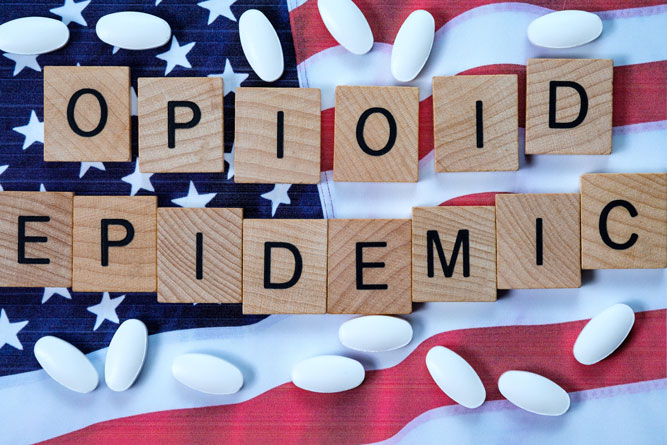The opioid crisis is felt nation-wide, but some states have been hit worse than others. Ohio has been one of the most ravaged states during the ongoing crisis. The Buckeye State trails only West Virginia for the number of deaths per capita related to drug use and much of those numbers come from opioids including both prescription medication and other forms like heroin. The epidemic has the cost the lives or livelihoods of thousands in Ohio, and now both the federal government and the state are putting their money where their mouth is to combat the crisis.
In September of 2018, the federal government announced it would send Ohio over $71 million to be used over the next two years to fight the growing epidemic. The grant is part of a nationwide effort by the Trump administration to help reduce the ever-growing addiction and death numbers caused by the opioid crisis. The Department of Health and Human Services (DHHS) announced it would be sending more than $1 billion to both states and US territories. The grants are part of a larger program initiated by the DHHS known as State Targeted Opioid Response (STOR) program.
The funding is aided with help by the recently passed 21st Century Cures Act.
Most of the federal dollars, or around $55 million, will be directed to medication-assistance programs that will utilize three unique drugs approved by the FDA to help treat opioid abuse. The leftover $16 million will be directed to various community health centers for opioid abuse outreach including counseling, awareness campaigns, and other mental health services. “The more than $1 billion in additional funding that we provided this week will build on the progress we have seen in tackling this epidemic through empowering communities and families on the frontlines,” said HHS Secretary Alex Azar.
Attorney General Jeff Sessions was also recently in Ohio to announce actions his Department of Justice is taking to combat the criminal sector of opioid abuse. Three steps under Sessions include shutting down a global opioid distribution network, shutting down a Sacramento-based black-market website, and revoking the ability of two Ohio doctors to prescribe opioids.
Trump’s executive administration and Department of Justice have made tackling the opioid crisis a large part of their agenda with action now following words. The current administration’s fight against opioids began with the declaration of the opioid crisis as a national public health emergency.
What Did The Federal Declaration Do?
If you’ve been watching the opioid crisis closely you know that it was declared a public health emergency by the Trump administration in October 0f 2017, with the declaration extended several times by the government since then. Is the release of federal funds part of the battle against opioid addiction?
Though the Trump Administration and current Department of Health and Human Services secretary have declared the crisis a public health emergency, it has not yet been declared a state of emergency, which would allow states to tap into federal funds to combat opioid addiction the same way they could tap into the federal government for disaster relief. The creation of the STOR program and passage of 21st Century Cures Act still does not allow states to tap directly into federal funds but the grants will help bolster care and treatment more than the declaration alone.
There’s more good news. In a day of increasing party politics, the Senate just recently came together to pass a new bill to further combat the crisis. In a 98-1 vote, the Senate passed a new bill which expands telemedicine services across the country. The bill also modified existing provisions dealing with electronic prescriptions which have become increasingly more popular in post-surgical pain treatment. The bill allows for states to use Medicaid for further telemedicine services and is targeted to communities experiencing the worst circumstances like Native American reservations. The bill has already been passed by the House and will next to go to President Trump’s desk where he is expected to eagerly sign.
Is it Getting Better?
With the influx of declarations, money, and programs are the opioid crisis showing any signs of slowing in Ohio? While specific state numbers aren’t available since the programs and aid began, recent trends suggest something is working.
According to the DHHS, the numbers of people trying heroin for the first time was cut in half from 2016 to 2017 and the number of Americans abusing opioids dropped slightly. Even slightly is progress from the spike of abuse from 2000 to 2016. The number of people abusing opioids does seem to be coinciding with recent efforts to help the crisis, though what’s helping move the data in the right direction will need to be carefully determined through deep research and analysis.
Getting Help in Ohio
Ohio may be fighting one of its toughest battles against opioid addiction but there are ways out if you or a loved one is currently addicted. If you need help, there are dozens of licensed detox centers and treatment facilities scattered across Ohio – and they’re ready to help you.
Pick up the phone and call our treatment facility. We can help wean your body and mind off opioids in a safe, controlled, and comfortable manner so you won’t have to fight dope-sickness and withdrawal like you would on your own.







